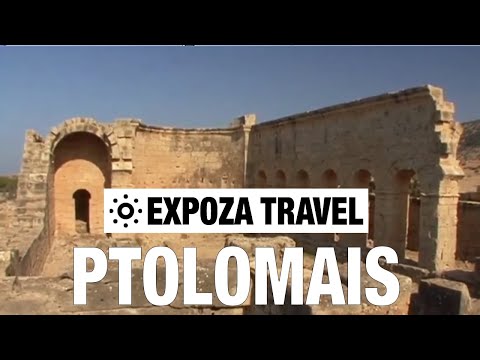
Nestled along the stunning coastline of Libya, the ancient city of Ptolomais offers a unique glimpse into the past, blending rich history with breathtaking Mediterranean views. Once a thriving port and cultural hub during the Hellenistic period, Ptolomais today invites travelers to explore its ruins and rediscover its stories. This vacation travel video guide will give you an overview of what to expect when visiting this hidden gem.
#### Getting to Ptolomais
Ptolomais is located in eastern Libya, near the modern town of Tolmeita. Traveling to Libya requires careful planning due to political instability in some regions. It’s advisable to check travel advisories and consider arranging your visit through a reputable tour operator that specializes in North African travel. The nearest major airport is Benghazi International Airport, from which you can drive or take a guided tour to Ptolomais.
#### Historical Significance
Founded in the 3rd century BC by Ptolemy I of Egypt, Ptolomais quickly became an important center for commerce and culture in Cyrenaica. The city was known for its grand architecture, including theatres, temples, and public baths that catered to its diverse population of Greeks, Jews, Persians, and later Romans.
#### Attractions in Ptolomais
1. **Archaeological Site**: This is the main draw of Ptolomais where visitors can stroll through ruins that speak volumes of its historical prominence. Notable structures include the remains of several large homes with beautiful mosaics, a Roman-style theatre that once seated thousands, and remnants of public baths that showcase advanced ancient engineering techniques.
2. **Museum**: Close to the archaeological site is a small museum housing artifacts recovered from excavations around the area. These include pottery, coins, tools, and stunning mosaics preserved almost perfectly over centuries. The museum offers insightful context about daily life in ancient Ptolomais and highlights its trade networks across the Mediterranean.
3. **Coastal Scenery**: Don’t miss out on enjoying the natural beauty surrounding Ptolomais. The Libyan coastline here boasts clear blue waters and sandy beaches that provide a tranquil escape from exploring historical sites.
#### Best Time to Visit
The best time to visit Ptolomais is during spring (April and May) or fall (September and October) when temperatures are more moderate compared to the hot summer months.
#### Practical Tips
– **Language**: Arabic is the official language in Libya; however, some locals also speak English especially around tourist areas.
– **Currency**: Libyan Dinar (LYD) is used; ensure you have adequate cash as international credit card usage can be limited.
– **Safety**: Always prioritize safety by staying informed about current travel advisories and maintaining communication with your embassy.
– **Travel Insurance**: Given varying factors affecting travel stability in Libya it’s crucial to have comprehensive travel insurance covering all aspects of health emergencies and trip cancellations.
### Conclusion
Exploring Ptolomais provides not just a journey into an ancient city but an adventure into less-traveled paths offering profound cultural engagements with Libya’s historical landscapes. Whether you’re an avid historian eager to walk through time or a curious traveler looking for new experiences away from mainstream tourist spots, this ancient city opens doors to both past eras filled with stories waiting to be told again through your travels.
### Video Synopsis
To enhance your preparation for visiting this captivating location watch our “Pitolmais (Libya) Vacation Travel Video Guide” available on YouTube which visually captures all aspects discussed here guiding you through necessary preparations while inspiring your itinerary planning with vivid imagery from current site conditions.
